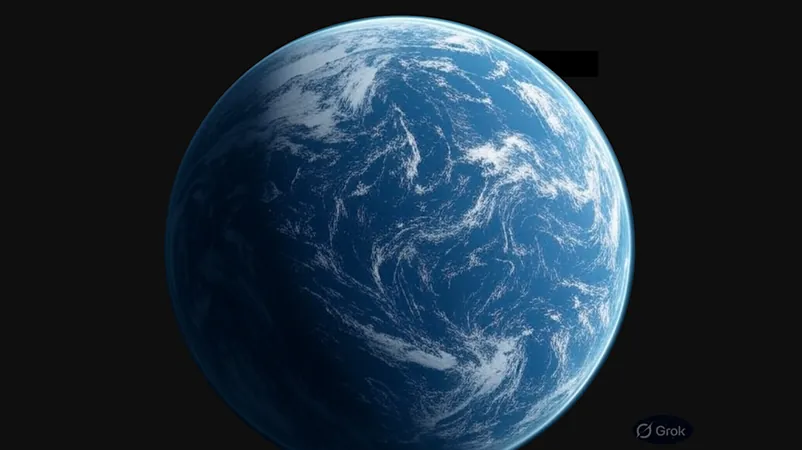
Unlocking the Secrets of Life on Icy Worlds: Revolutionary Machine Learning Detects Biosignatures
2025-05-30
Author: Li
As humanity sets its sights on exploring distant icy ocean worlds like Europa and Enceladus, scientists are racing to determine if these celestial bodies harbor life. Upcoming missions promise to unveil thrilling possibilities, but they come with an overwhelming amount of data. Enter the power of autonomous science and cutting-edge machine learning!
Mass spectrometers (MS) are emerging as the frontline warriors in the quest for biosignatures, offering intricate spectral data that could reveal telltale signs of life. One of the key players in this investigation is light stable isotopes, which can hint at biological activity through pronounced fractionations.
Yet, the challenge lies in differentiating genuine biosignatures from the noise of complex geological processes that could mimic these indicators. This is where machine learning steps in, promising to unravel the mysteries buried within the data. However, many ML models operate like black boxes, making their predictions hard to interpret and undermining scientists' confidence in the results.
To tackle this issue, researchers have developed an innovative biosignature detection model using a bespoke CO2 isotopologue dataset, created from laboratory simulations mimicking ocean worlds. This dataset encompasses a range of seawater chemistries and potential biological imitations.
The team employed a sophisticated approach featuring variable construction that provides essential mathematical and geochemical context for identifying biosignatures. A novel feature selection method dubbed Nearest-neighbors Projected Distance Regression (NPDR) pinpointed crucial predictors.
Incredible results emerged: the Random Forest model achieved a staggering 87.3% mean accuracy in predicting biosignatures, regardless of the brine chemistry of the samples. But it doesn't stop there—researchers employed network visualization techniques to illuminate the interactions within their models, enhancing the interpretability of their predictions.
Moreover, addressing trust issues in astrobiology, the model incorporated single-sample variable importance scores to identify and understand false predictions on a sample-by-sample basis, heralding a new era of reliable biosignature detection in machine learning.
As we continue to push the boundaries of exploration, understanding these biosignatures could bring us closer to answering one of humanity's biggest questions: Are we alone in the universe?

 Brasil (PT)
Brasil (PT)
 Canada (EN)
Canada (EN)
 Chile (ES)
Chile (ES)
 Česko (CS)
Česko (CS)
 대한민국 (KO)
대한민국 (KO)
 España (ES)
España (ES)
 France (FR)
France (FR)
 Hong Kong (EN)
Hong Kong (EN)
 Italia (IT)
Italia (IT)
 日本 (JA)
日本 (JA)
 Magyarország (HU)
Magyarország (HU)
 Norge (NO)
Norge (NO)
 Polska (PL)
Polska (PL)
 Schweiz (DE)
Schweiz (DE)
 Singapore (EN)
Singapore (EN)
 Sverige (SV)
Sverige (SV)
 Suomi (FI)
Suomi (FI)
 Türkiye (TR)
Türkiye (TR)
 الإمارات العربية المتحدة (AR)
الإمارات العربية المتحدة (AR)